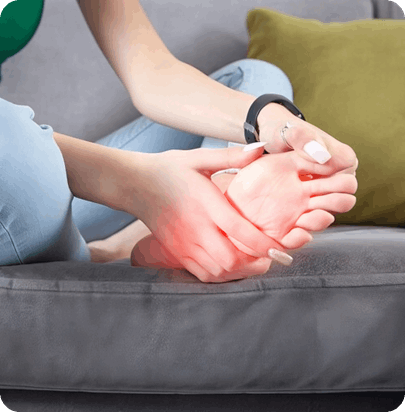Foot pain is a widespread issue that affects people across all walks of life. From occasional discomfort after a long day to persistent pain that interferes with daily activities, addressing the root causes of this pain is key to maintaining mobility and overall well-being. Understanding what triggers pain, ways to reduce its likelihood, and available forms of treatment can be helpful for those experiencing discomfort.
What Causes Foot Pain?
Foot pain can originate from numerous causes. These range from overuse to underlying medical conditions. Below are some of the most common triggers.
Overuse and Activity-Related Strain
Overuse injuries often result from repetitive stress on the feet due to high-impact activities such as running or jumping. These injuries can lead to conditions such as plantar fasciitis, which involves inflammation of the tissue that runs along the bottom of the foot. Other examples include stress fractures and tendonitis, both of which develop over time due to excessive strain.
Poor Footwear Choices
The type of shoes worn on a daily basis can significantly impact foot health. Footwear that provides inadequate arch support, improper cushioning, or an ill fit can cause pain and discomfort. Wearing high heels frequently places excessive pressure on specific parts of the foot, while shoes with narrow toe boxes may lead to conditions like bunions.
Injuries or Trauma
Accidental injuries, such as sprains, fractures, or dislocations, can cause acute or long-term pain. Trauma from an isolated incident may also lead to stiffness, swelling, and reduced range of motion. These conditions may affect everyday activities such as walking or exercising.
How Is It Treated?
Foot pain treatment depends on the underlying cause and its severity. Many cases of mild pain improve with simple at-home remedies, such as applying ice. Resting from high-impact activities and using a supportive brace or bandage are other common practices that can reduce strain and swelling. For cases that do not respond to at-home treatment, medical care providers may recommend more extensive approaches.
Medications
Medications may sometimes help manage the symptoms of medical conditions or inflammation. Cortisone injections and other anti-inflammatory medications are often used to reduce swelling and alleviate pain. Prescription medications may be required for more severe issues.
Surgical Intervention
Surgical options may be required for cases where conservative treatments fail to resolve the problem. Situations where surgery can be explored include procedures to repair a torn ligament or address deformities such as bunions. Surgery is typically seen as a last resort and requires a thorough consultation with a healthcare professional.
When to Seek Treatment From a Podiatrist
While many forms of foot pain are manageable with self-care and preventative measures, some cases require professional attention. If foot pain persists for an extended period, worsens with time, or significantly interferes with your daily life, consulting a podiatrist may be beneficial. Taking steps to address foot pain early can help prevent complications and improve long-term comfort. If you’re experiencing concerns about your foot health, reach out to a healthcare provider for tailored advice and guidance specific to your needs.
- How To Improve Gut Health – Boost Digestion, Energy & Immunity!
- Is Coffee Beneficial To Health – Expert Insights You Can’t Afford To Miss!
- TimesHealthMage Diet Plans For Diabetics – Manage Blood Sugar The Smart Way!
- Which Type Of Exercise Is Best For Improving Cardiorespiratory Fitness – Expert Advice!
- Fitness Ryldoria Vornik – A New Way To Feel Strong!


Leave a Reply